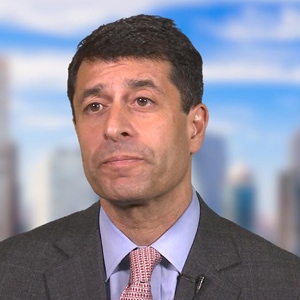With momentum from regional partners, China appears likely to gain from the new US approach to trade policy.

The withdrawal of the United States from the Trans-Pacific Partnership (TPP) agreement will cause Asia to lose out on hundreds of billions of dollars of trade. At the same time, it looks set to reshape Asia-US relations and potentially hand trade leadership in the region to China.
Although newly elected president Donald Trump triggered the collapse of the TPP, China’s strength as the linchpin of burgeoning intra-Asian trade together with the crafting of new regional accords to fill the TPP vacuum may portend an outcome the opposite of that predicted in president Trump’s bellicose rhetoric toward the region’s major players.
Shredding the TPP was Trump’s first major foreign policy initiative, and it sent shock waves across Asia, specifically among the region’s treaty signatories: Japan, Singapore, Malaysia, Vietnam, Brunei, Australia and New Zealand. The treaty was designed to set up tariff-free trade among the nations that sign on and included standards on employee rights and the environment—among other issues—that are legally enforceable between the signatory countries.
According to the Peterson Institute for International Economics, an economic think tank, the effective cancellation of the TPP is likely to remove $295 billion of annual trading income from the global economy, of which $78 billion was projected to contribute to the US’s trade account.
Meanwhile, the fear in Asia is that the Trump administration’s junking of the TPP—which the signatories accept has rendered the accord unviable—will be a prelude to full-blown trade war. Asian countries, most of which derive the bulk of their GDP from trade, are worried that the US will slap punitive tariffs on goods from the region, with a figure of 20% rumored to be the administration’s plan, alongside attempts to weaken the US dollar.
A SENSE OF RELIEF
“Government officials across Asia continue to express concern about the uncertainty and potential downside risks of the Trump administration’s protectionist policies toward the region,” says Stephen Schwartz, head of Asia-Pacific sovereigns at Fitch Ratings in Hong Kong. “That said—TPP aside—there does seem to a sense of relief in both the public and private sectors in Asia that so far the worst fears of a protectionist agenda that was a plank of Trump’s election campaign have not yet materialized,” Schwartz adds. “For example, China has not yet been formally labeled a ‘currency manipulator,’ and Japan’s prime minister [Shinzo] Abe appears to have struck a productive relationship with his US counterpart.”
Meanwhile, Vietnam, the country that was supposed to have had the most to gain from the TPP, is recalibrating its strategy after the demise of the deal, and optimism seems to be the mood of the day.
“TPP was supportive of greater integration of economies and reduced barriers to trade and investment. Vietnam is booming, with GDP growing at 6% or so” says Mark Leahy, principal at Singapore-based private equity firm Presidio Capital. “Of course, the ‘turbo’ effect of the TPP would have been welcomed by some but seen as unnecessary by others. Policies that allow Vietnam’s privatization pipeline to flow and promote FDI [foreign direct investment]—are the two aspects that will benefit the country most greatly now.”
Meanwhile, as “Asia’s pivot to Asia” plays out, China’s proposed Regional Comprehensive Economic Partnership (RCEP), comprising multilateral trade agreements with 16 countries, provides a natural fallback for TPP signatories as the TPP accord is junked.
CURRENCIES, A POTENTIAL TRIGGER
Notwithstanding the RCEP, a crucial starting point in a potential trade war is the exchange rate of the US dollar against Asian currencies. Trump should want a much weaker dollar in the hope of boosting US exports, but that might not be easy to accomplish. China, with its closed capital account and setting of the renminbi by the Chinese authorities, may effectively be impervious to any attempt by the Trump administration to affect the value of the renminbi.
Furthermore, the placement of the Chinese renminbi and the yen in the crosshairs as the Trump administration targets of Asian “currency manipulators” would be somewhat ironic. Chinese authorities have been battling to prop up the value of their currency since the surprise devaluation of the renminbi in August 2015, while Japan has not intervened in foreign exchange markets to influence the value of the yen for more than six years.

If the Trump administration has targets in the rest of Asia, they are the currencies of economies with open capital accounts, and these may be vulnerable to an attempt to tamp down the dollar’s value for trade purposes. Principally, these currencies are those of South Korea, Taiwan and Singapore; together, these economies ran a current account surplus with the US of $239 billion in 2015. This is a conspicuously high number in relation to the region’s economic leviathans: the $135 billion surplus run by Japan in that year or the $330 billion surplus run by China.
In other words, rather than targeting the Asian giants, Trump appears to have every reason to go after smaller countries with strong economies. Research from the Peterson Institute suggests that the Singapore dollar and Taiwan dollar are overvalued versus the US unit by 28% and 26% respectively; Singapore runs a 19% current account surplus with the US, while Taiwan is in the black by 15% and South Korea by 8%.
All these countries tick the boxes of measures that are used by the US Treasury to identify currency manipulation, including $20 billion or more of surplus in bilateral goods trade, a current account in excess of 3% of GDP and purchases of foreign currency over 2% of domestic product.
But economists are skeptical of the of the US’s ability to impact these surpluses via attempting to shift exchange rate levels.
“Presidents are actually almost completely powerless to affect their currencies. Jawboning, or in this case, ‘Twitterboning,’ might last for a day or two at most,” says David Carbon, managing director of economic and currency research at DBS Bank in Singapore. “A second attempt is usually half as effective as the first, and third attempts usually prove so embarrassing that most officials don’t even contemplate them.”
Indeed, economists agree that the policies the Trump administration is headlined to pursue are likely to cause exchange rates for the dollar to rise versus Asian currencies. “In particular, the agenda of tax cuts and higher infrastructure spending points to wider fiscal deficits,” says Fitch’s Schwartz. “Together with a tighter US labor market and emerging inflationary pressures, [that] will lead to Federal Reserve interest rate hikes, resulting in a stronger dollar.”
PROTECTIONISM IN POLICY

But absent the vagaries of foreign exchange rate “targeting,” the big question is whether the Trump administration will engage in protectionist trade policies toward Asia, and if so, whether such policies would do more damage to Asia or the US. China, India, Hong Kong, Taiwan, South Korea, Singapore, Malaysia, Thailand, Indonesia and the Philippines are less dependent on trade with the US than ever before.
According to IMF data, the US accounts for just 15% of export sales from these countries. At the same time, Asia is the biggest buyer of US exports, accounting for 21% of America’s goods shipped overseas. What we may see rather is an ever-increasing pivot of Asia to trading within its own borders.
Interestingly, the European Union has stepped up to the plate with regard to trading with Asia and has made this explicit in its relationship with the Association of Southeast Asian Nations, having provided financial and technical assistance to ASEAN over the past few years. The EU has in place some key bilateral trade deals with Singapore and Vietnam and is negotiating with Indonesia, the Philippines, Malaysia and Thailand on reduced-tariff trade. The efforts are showing results. For example, Malaysia has seen a steady increase in its exports to the EU since 2005, with a significant annual increase of 16% between 2014 and 2015, dominated by the sale into the EU of Malaysian industrial products such as electrical equipment and machinery.
MORE ANTIGLOBALIZATION?
In the context of Brexit, the prospect emerges of the Union breaking up, with momentum expected in this case from the possible victory in the French presidential election of arch euro skeptic Marine Le Pen. A victory for Le Pen in the polls might suggest that France could leave the European Union in a “Frexit” and that the new fashion being assembled by Donald Trump for global trade to be agreed upon bilaterally could also take hold in France.
If Le Pen won the presidency, somewhat ironically, she would be in a privileged position to provide “import substitution” to Asia should the Trump administration attempt a trade war across the Pacific. An obvious example of import substitution would be aircraft: Boeing exports around $10 to $13 billion of commercial aircraft to China every year, but a trade war could easily see this business switched to Europe’s Airbus consortium. And import substitution is a possibility across a broad range of agricultural and industrial segments—including soybeans, which are one of the US’s biggest exports to China. Soybean import substitution alternatives are available from a variety of producers in Latin America, as they are for a host of goods manufactured in the United States.
The result of president Trump’s railing against US trade partners in Asia, if it does materialize in policy, may, ironically, turn out to strengthen Asia’s hand.



